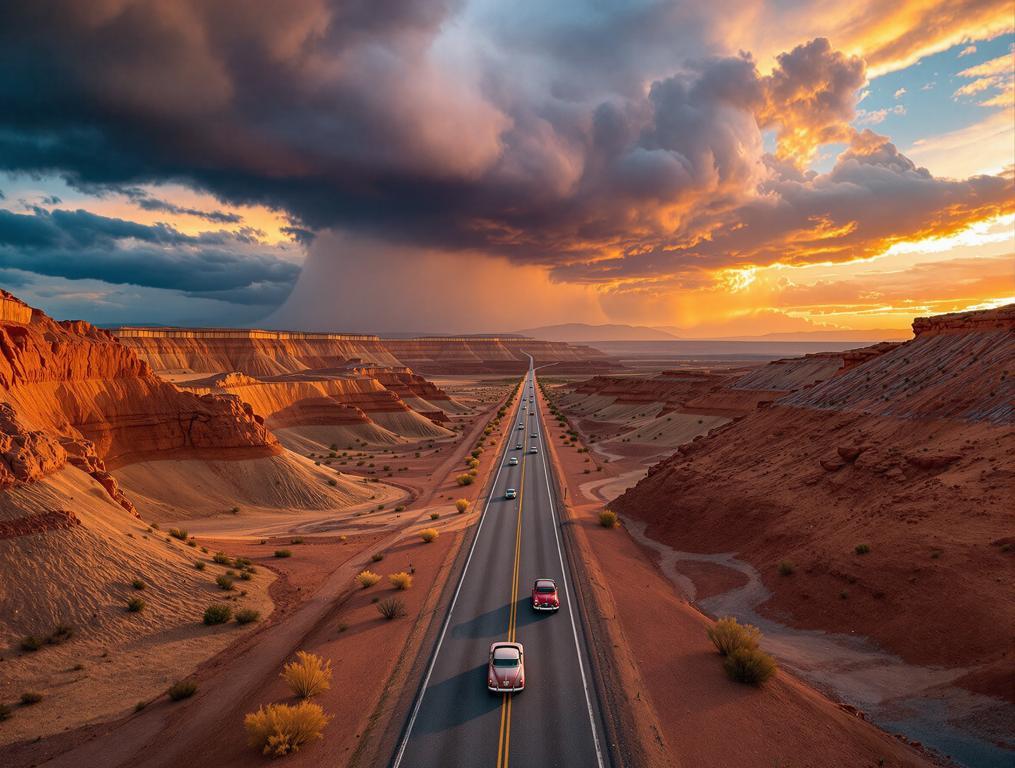I’ve just rounded the bend on Erie Street, and I’ve stopped dead in my tracks. The Arizona desert sun beats down at 103°F, but I’m experiencing the strangest sensation – like I’ve driven through some invisible barrier into 1955. Before me stretches a perfectly preserved street with vintage Chevrolets and Fords parked at angles along storefronts that haven’t changed in seven decades. This is Lowell, Arizona, a ghost town that sits just 3 miles southeast of Bisbee in Cochise County. And unlike its famous neighbor that attracts over 100,000 visitors annually, Lowell holds a bizarre historical mystery: a single street that somehow survived when a 900-foot-deep copper mine literally erased the rest of the town.
The 900-Foot Copper Pit That Erased a Town But Spared One Street
It’s hard to comprehend the scale until you see it. The Lavender Pit copper mine sits like an alien crater carved into the earth, having displaced more than 250 homes during its expansion between 1950 and 1974. Like a suburban Atlantis, most of Lowell simply vanished.
Yet somehow, Erie Street remained – a solitary witness to the mining operation that extracted 86 million tons of copper ore over two decades. The preservation feels deliberately staged, like a movie set where the director called “cut” in 1958 and everyone simply walked away.
While other western mining towns focus on preserving frontier history, Lowell offers something entirely different: America’s romance with the automobile captured in amber. The Shell gas station stands frozen, its vintage pumps displaying 31 cents per gallon. A Greyhound bus waits eternally for passengers who will never arrive.
How Preservationists Transformed Abandonment into America’s Most Authentic Time Capsule
Unlike ghost towns facing climate-related destruction, Lowell’s preservation challenges stem from its proximity to the massive Lavender Pit. The Lowell Americana Project, started in the early 2000s, has been the town’s unlikely savior.
The mastermind behind this preservation is local visionary Allen, who began collecting and strategically placing period-correct vehicles along Erie Street. What started as passion project gradually transformed into an outdoor museum of mid-century Americana.
“It’s like someone took a perfect slice of 1950s America and preserved it in desert air. You don’t get this feeling in Bisbee anymore – it’s become too polished, too aware of its tourism appeal. Here, it’s just raw nostalgia.”
While some towns focus on Victorian-era preservation, Lowell’s unique value comes from its mid-century aesthetic. From the empty movie theater with its original marquee to the hardware store’s dusty window displays, it feels less like a restoration and more like an accidental time capsule.
America’s small towns often preserve curious slices of history, from unusual wartime ordinances to Lowell’s perfectly preserved streetscape. The ghost town has become something rare in our era of manufactured experiences – authentically inauthentic.
Visiting During Monsoon Season: The Perfect Time to Capture Both History and Desert Blooms
Like other towns that resist commercial development, Lowell offers an experience untouched by mass tourism. To fully appreciate it, arrive before 10 AM when the desert light casts long shadows across the vintage automobiles.
Right now, in late June 2025, you’ll catch the additional magic of monsoon season. The afternoon thunderstorms create dramatic skies perfect for photography, while unexpected desert blooms transform the normally sparse landscape.
Park at the free overlook lot by the Lavender Pit, then walk Erie Street on foot. The viewpoint has cleverly designed fence cutouts for unobstructed photography. For the best experience, bring water – there are no operational services in Lowell itself.
The Bisbee Breakfast Club – a 1950s-style diner at the edge of town – is your only food option. Their green chile omelette makes the perfect fuel before exploring the ghost town’s weathered artifacts.
Standing on Erie Street as thunderclouds gather over the massive copper pit, I feel like I’ve discovered a pocket dimension where two eras collide – mining devastation alongside meticulous preservation. My camera roll is filled with shots of vintage Chevys against desert blooms that Sarah will use in her next exhibition. This strange little street, saved from a mining operation’s appetite, offers something increasingly precious in our standardized world – genuine surprise. Whatever mysterious combination of economics and sentiment spared Erie Street, I’m grateful for the oversight. Some places should remain accidentally perfect.
